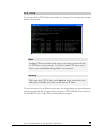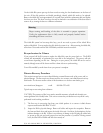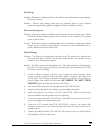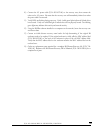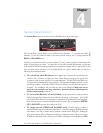
P/N: 900-10004-00 REV 02 USER GUIDE, IOSAFE R4
108
RAID Levels Simplified
RAID can be somewhat daunting; this appendix will help simplify RAID for you.
RAID is an acronym for
R
edundant
A
rray of
I
ndependent
D
isks. Basically, if properly configured,
it can store data on multiple disks in a way that if one disk fails, the data can still be accessed from
the surviving disk(s). A RAID level selects how data will be kept redundant, the most popular ones
being levels 0, 1, and 5. Contrary to the RAID acronym, RAID level 0 does not provide any
redundancy.
RAID Level 0
RAID level 0
provides the best write performance of all the RAID levels as it stripes data across all
disks so that data can be written to all disks in parallel. Unfortunately, it is not redundant, so if one
disk fails the entire volume will fail. RAID level 0 can be configured with one or more disks, and its
capacity is the size of the smallest disk in the RAID set multiplied by the number of disks in the set.
For example, a four disk RAID 0 will yield the capacity of all four disks, assuming they are identical
in size.
RAID Level 1
RAID level 1
consists of 2 or more disks, all disk(s) other than the first being an exact mirror of the
first. RAID level 1 can sustain disk failure up to the total number of disks in the RAID set minus
one. For example, a two-disk RAID 1 volume can sustain a one-disk failure and continue running.
A three-disk RAID 1 volume can sustain up to two disk failures. If a disk fails, the data is retrieved
from the surviving disk. Unfortunately, RAID 1 capacity utilization is not optimal in a three or more
disk configuration. The capacity is limited to the size of the smallest disk in the RAID set.
RAID Level 5
RAID level 5
provides the best balance of capacity and performance while providing data
redundancy. RAID 5 provides redundancy by striping data across three or more disks and keeping
the parity information on one of the disks in each stripe. In case of disk failure, the surviving disks
and the parity disk are used to reconstruct the lost data, providing that data transparently to the user
application. Upon replacing the failed disk with a good disk, the reconstructed data is written out to
the new disk, and when the reconstruction (or sometimes referred as re-sync) process is complete,
the volume returns to a redundant state. The capacity of a RAID 5 volume is the smallest disk in
the RAID set multiplied by one less than the number of disks in the RAID set. For example, a four-
disk RAID 5 set will provide the capacity of three disks, assuming all four disks are identical in size.
A
ppendix
A



